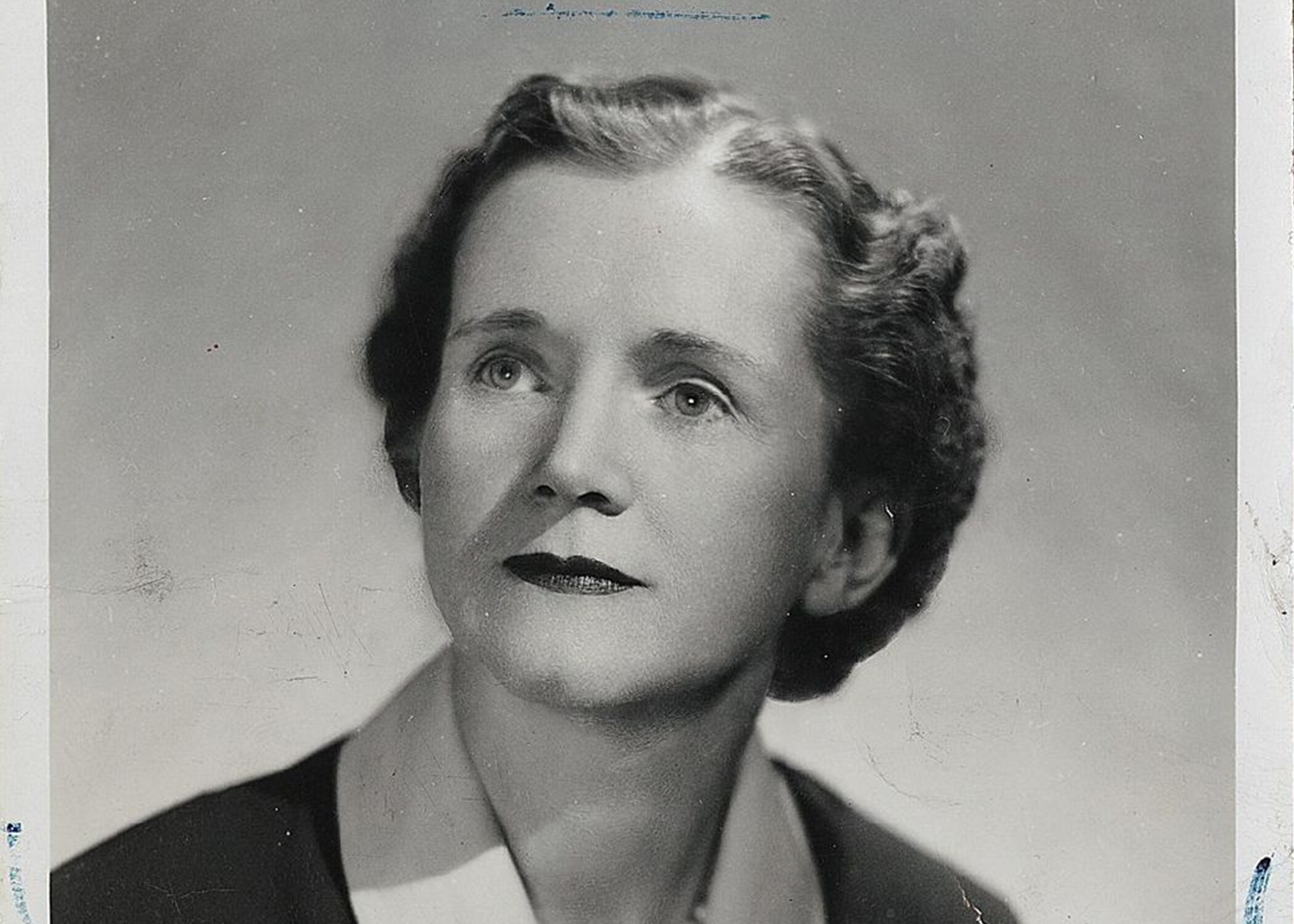People often ask me how long I worked on The Sea Around Us. I usually reply that in a sense I have been working on it all my life, although the writing of the book occupied only about three years. As a very small child I was fascinated by the ocean, although I had never seen it. I dreamed of it and longed to see it, and I read all the sea literature I could find.
—Rachel Carson, in “Origins of the Book, The Sea Around Us” (n.d.)
The Rachel Carson Papers at the Beinecke Rare Book and Manuscript Library contain original manuscripts, notes, and photos relating to the life of nature writer and environmentalist Rachel Carson.
Prior to the publication of Silent Spring (1962), dubbed one of the most controversial American books of the twentieth century, Rachel Carson’s The Sea Around Us (1951) remained on the best-seller list for eighty-six weeks. Originally assigned as a general article during her employment at the Bureau of Fisheries in Washington, The Sea Around Us, in addition to later published books Under the Sea Wind (1952) and Edge of the Sea (1955), established Rachel Carson as a household name.
To organize her citations and notes for The Sea Around Us, Carson used an extensive notecard system. Her notecards are organized topically, ranging from navigation to petroleum to oceanography. In the process of writing The Sea Around Us, Carson consulted more than a thousand print sources. Through her notecards, she details the historical emergence of what we call the sea through a nexus of scientific scholarship, history, and political notes. Carson is keen to notice imagistic language in other texts, no doubt influencing her own fusion of narrative and science.

Climate Change
Importantly, Carson’s notecards discuss ever pertinent issues like climate change, sea level rise, coral reef and micro-organism health. Between typed and hand-written notes, Carson’s recognition of climate change influenced the development of a larger environmental ethic present in her later work. While she recognizes that much of the ocean is still unresearched, Carson’s citations underscore the persistent reality of climate change–that scientists have reported environmental changes much earlier than the introduction of climate change as a political topic at the 1973 United Nations Conference on the Human Environment.
For example, Carson cites scholarship prior to 1950, which discusses the retreat of glaciers and oceanic temperature changes.


Marine Life and Waves
Carson also discusses the anthropogenic causes of climate change, predating many scientific discussions of human intervention. First, she questions humanity’s nautical exploration in historical narratives, noting: “America not discovered by Columbus.” In other notecards, Carson contemplates the impact of European colonization on Indigenous fauna and peoples. As part of her exploration of the wonder of the ocean, she reminds us of humanity’s power–both negative and positive–to affect the environment.
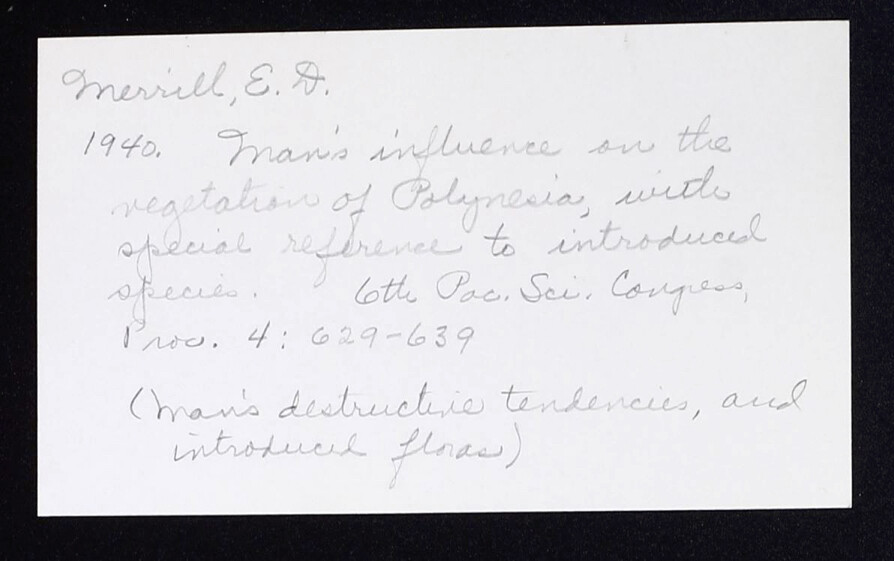
Carson discusses a variety of marine life, painting a picture of the ocean teeming with life from the biggest mammal of the ocean, whales, to smaller organisms, like plankton and snails. Throughout her notecards, Carson prioritizes every aspect of her subject, detailing each part of the ocean with equal care.
Interestingly, Carson animates the ocean itself–positioning waves as alive and the land-sea relation as ever-evolving. On one of her notecards, she writes (with abbreviated language): “Theme of chapter is wave as a living thing, through which ocean makes its power felt. Each wave has a definitive cycle from birth to death.”
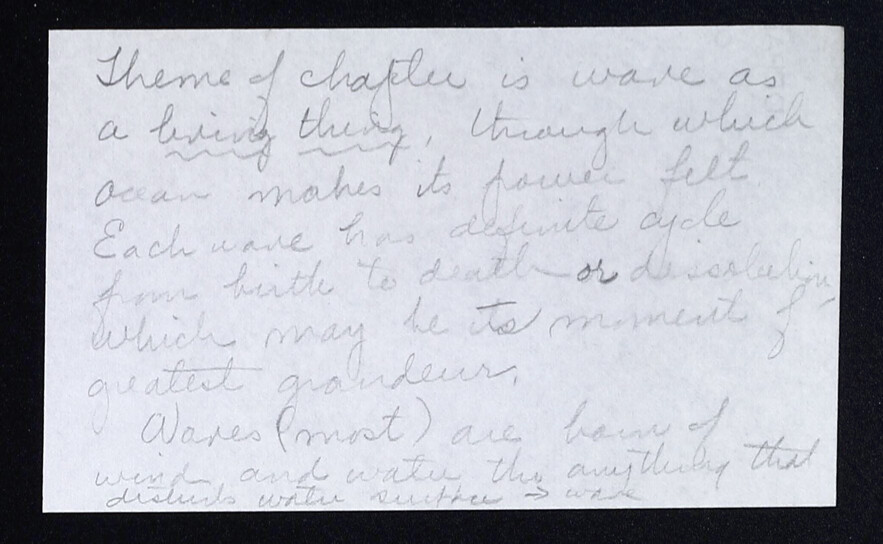
In addition to detailed citations, as part of research for The Sea Around Us Carson boarded fishing boats and research vessels. She was the first woman ever to take part in a cruise on the Albatross III. Carson writes about her first-hand experience with the vast expanse of the ocean:
To write with understanding about the ocean one need to pay a first-hand visit to the undersea world, and with this in mind…I learned what the surface of the water looks like from underneath and how exquisitely delicate and varied are the colors displayed by the animals of the reef, and I got the feeling of the misty green vistas of a strange, non-human world.
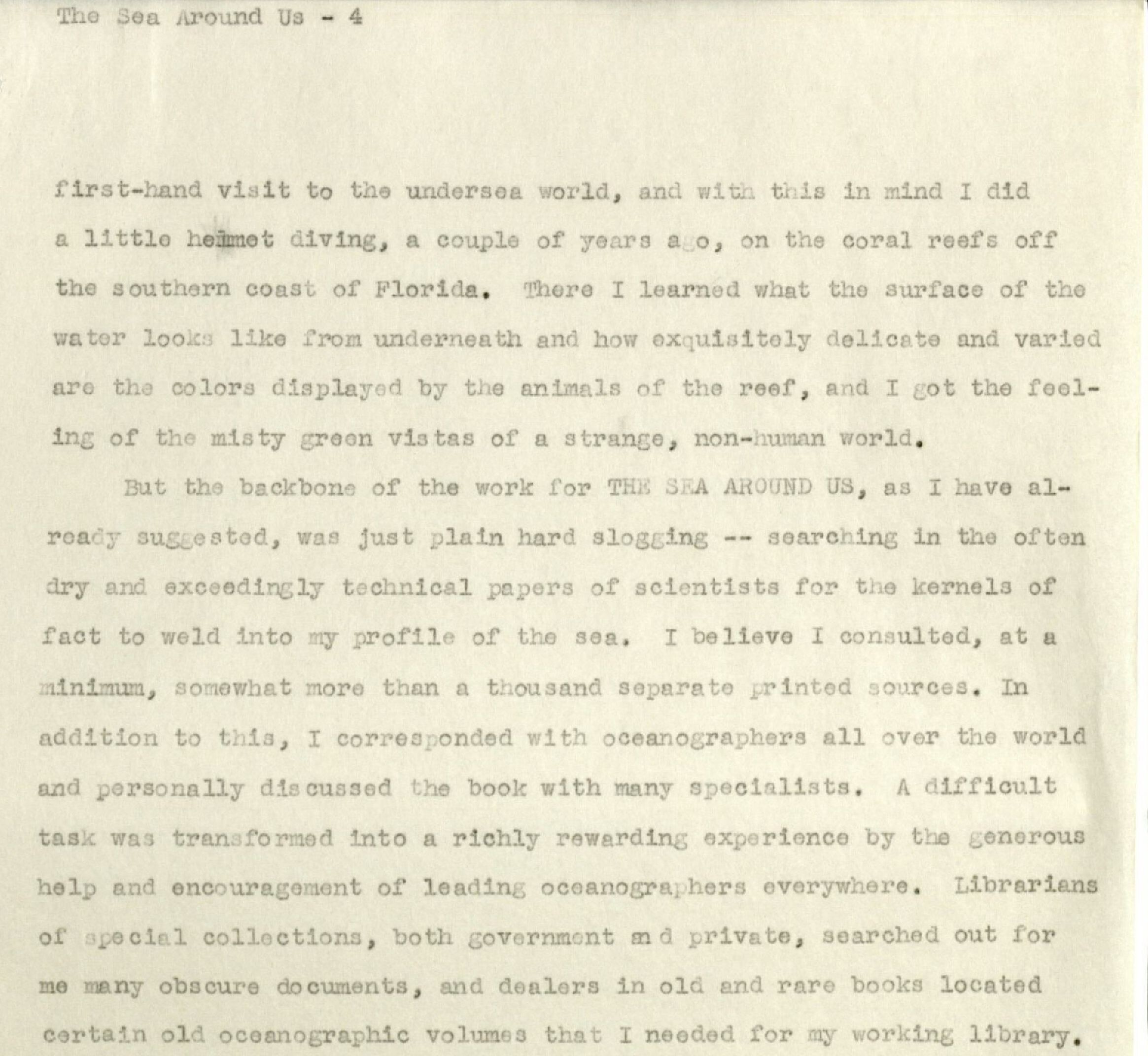
Climate Sketches
While Carson usually left the drawing up to illustrator Bob Hines, she also sketched in her notecards to remind her of the depths of the ocean and, in the case of the below notecard, the specific qualities of the Medditerranean. Carson’s notecards span a variety of geographic locations in addition to a survey of scientific information about our oceans.
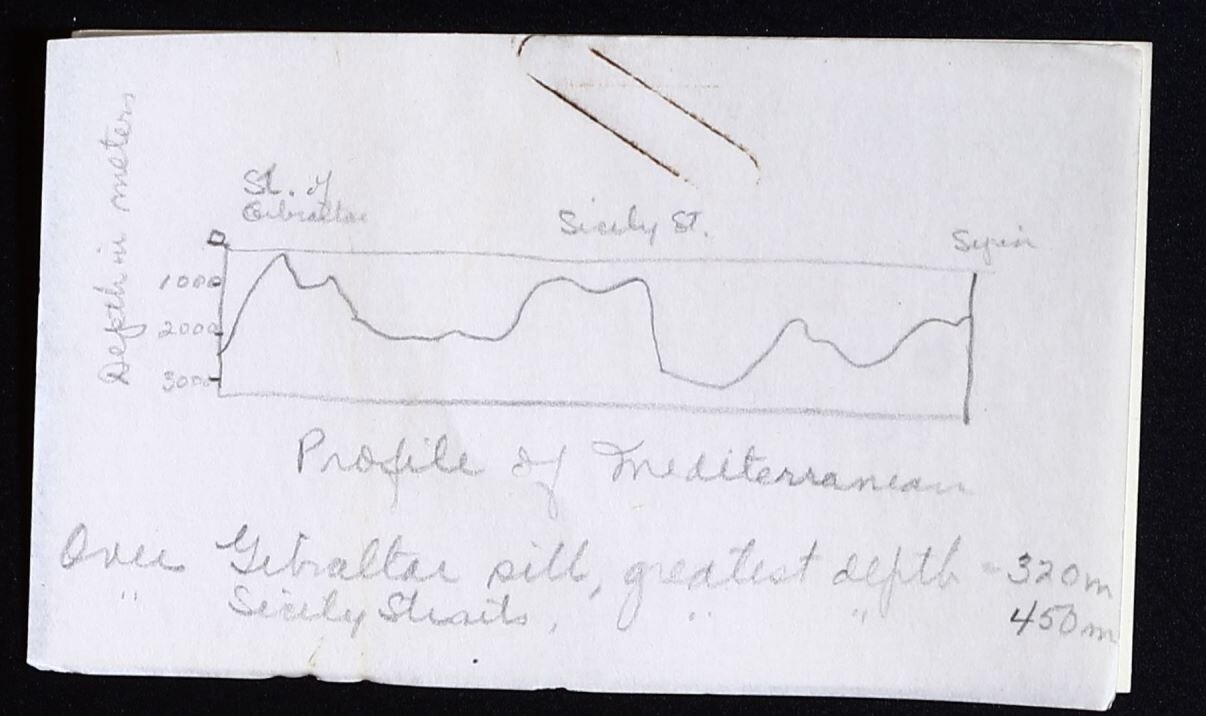
Rachel Carson’s notecards are a testament to her devotion to scientific and historical knowledge, as well as a reminder of the wonders of the ocean. Importantly, she balances cultivating wonder with a strong environmental ethic concerned with anthropogenic impacts on the environment and climate change as an early climate advocate.
